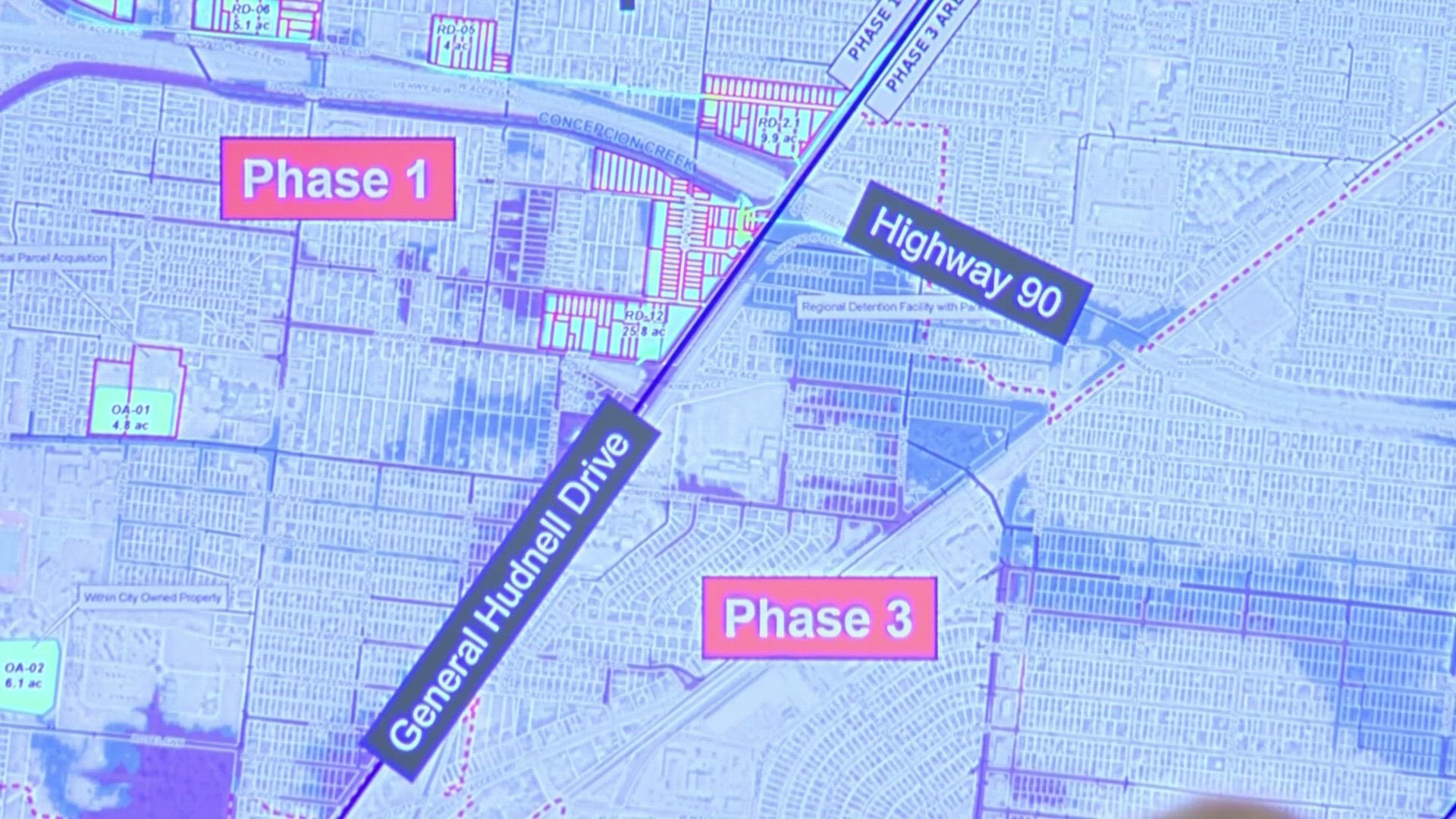SAN ANTONIO — A flood control plan has brought a wave of concern to a west-side neighborhood. More than 100 people could lose their homes due to federal preparation for a once-in-a-lifetime disaster.
The City of San Antonio has been working on a massive flood mitigation strategy for the last five years, but people living in the Thompson neighborhood claim they were "blindsided" by the proposal.
“They sent us a one-page trifold,” said Sarah Cervantes, who lives on 21st Street near Darby Boulevard. “It just said, ‘Concepcion Creek drainage.’ I didn’t even know until I looked into it and saw something about property acquisitions. So I called [the city] and asked them what was going on.”
According to city leaders, about 2,300 homes located along Highway 90 between General McMullen and Interstate 35 are in a floodplain. However, FEMA is about to update its map, which would include nearly 1,900 additional homes.
“Because of the 4,000 homes that will be in the floodplain, this is a project to get them out,” said Robert Reyna, assistant director of Public Works. “If you are in the floodplain, you will be required to get flood insurance if you don’t own your home. Also, you won’t be able to build on those properties at all.”
Reyna says the city is trying to get ahead of a 100-year storm event. Officials say there’s a 1% chance an extreme downpour could lead to about six feet of water in the floodplain.
Cervantes says she began distributing her own flyers and warning neighbors about the project.
“I have been here for over 50 years,” said Pablo Arriaga, who lives next door. “I grew up in the house my grandfather built. Then I bought this house about seven years ago and fixed it up. Now, I get this bad news. I’m not looking to go find another house, get another mortgage; prices are expensive and interest rates are out of control. I was set to just live here and retire.”
“I have lived here all my life,” said Cervantes. “I have been here for 66 years. I am 66 years old. I bought this house next to my parent’s home. A lot of people in this neighborhood have had their grandparents live here. Grandparents passed their homes onto their kids, and their kids passed it on to their kids. There’s a lot of history here and people don’t want to move. People don’t want to lose their homes; they have sentimental value.”
On Wednesday, about 200 concerned residents packed a public meeting where city staff presented the following options:
- Purchasing or acquiring 120 homes in the Thompson neighborhood through eminent domain. This plan would turn 52 acres of land into a multiuse detention pond, complete with trails and a recreational field. An underground storm drain would be constructed, and the existing channel would be upgraded. More than 2,300 structures would be removed from the floodplain at a cost of about $250 million.
- Purchasing or acquiring 158 homes through eminent domain. Eleven smaller detention ponds would be built in several neighborhoods as part of this plan. An underground storm drain would be constructed, and the existing channel would be upgraded. About 2,500 structures would be removed from the floodplain at a cost of about $240 million.
- Purchasing or acquiring 125 homes through eminent domain. A regional detention pond and underground tunnel system would be constructed as part of this plan, removing about 1,400 homes from the floodplain at a cost of about $560 million.
Reyna said that last option isn't feasible, however, because it could cause flooding in the San Antonio River.
“I am in disbelief and disappointed in our city government,” said Rudy Lopez, vice president of the Thompson Neighborhood Association. “There has to be another solution and that’s all we are asking for. We are asking for another solution, to look at it carefully. Why couldn’t they do this upstream where there are no homes and build the ponds there? In a time when we are living in a housing crisis, why demolish more homes? Solutions are what we are looking for.”
According to San Antonio’s real estate manager, a third-party appraiser would determine the value of each impacted property. The appraiser would also take renovations and upgrades into account. City leaders say homeowners would receive a fair market value and the cost difference to move into a similar-sized property.
Homeowners told KENS they would rather take the 1% chance of disaster than move.
San Antonio voters will make the ultimate decision on whether to greenlight the project in 2027.

